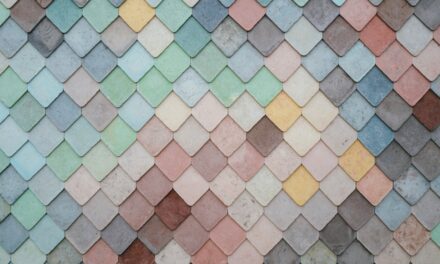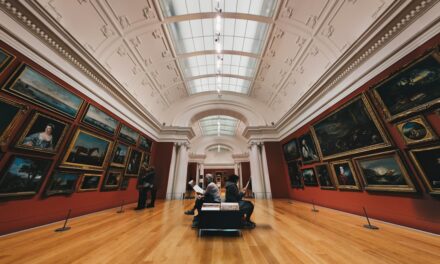In an increasingly interconnected world, the role of art transcends mere aesthetics; it serves as a powerful medium for community engagement and development. Volunteer projects that focus on sharing art skills have emerged as vital initiatives that not only enrich the lives of participants but also foster a sense of belonging and collective identity within communities. These projects often bring together individuals from diverse backgrounds, creating a tapestry of experiences and perspectives that can lead to transformative outcomes.
By harnessing the creative potential of volunteers, communities can cultivate an environment where artistic expression flourishes, ultimately contributing to social cohesion and growth. The act of volunteering in art projects is not solely about imparting skills; it is also about building relationships and nurturing a shared vision for the future. Artists and volunteers alike engage in collaborative processes that encourage dialogue, reflection, and mutual respect.
This exchange of ideas and techniques can lead to innovative approaches to problem-solving and community engagement. As participants work together to create art, they develop a deeper understanding of one another’s experiences, fostering empathy and solidarity. In this way, volunteer art projects become a catalyst for change, inspiring individuals to take an active role in shaping their communities.
Summary
- Volunteer art projects play a crucial role in community growth by sharing art skills and fostering creativity.
- Art is important in community development as it promotes cultural expression, social cohesion, and economic growth.
- Volunteer projects benefit communities by providing access to art education, promoting mental well-being, and revitalising public spaces.
- Successful volunteer art projects include community murals, art workshops, and public art installations that engage and empower local residents.
- To get involved in volunteer art projects, individuals can reach out to local community centres, art organisations, or social media groups to find opportunities to contribute their skills and time.
The Importance of Art in Community Development
Art plays a crucial role in community development by serving as a vehicle for expression, communication, and connection. It allows individuals to articulate their thoughts, feelings, and experiences in ways that transcend language barriers. Through various forms of artistic expression—be it painting, sculpture, theatre, or music—communities can explore their identities and histories, celebrating their unique cultural heritage while also addressing contemporary issues.
This exploration fosters a sense of pride and ownership among community members, encouraging them to engage more actively in local initiatives. Moreover, art has the power to challenge societal norms and provoke critical conversations about pressing issues such as inequality, injustice, and environmental concerns. By providing a platform for underrepresented voices, art can illuminate the struggles faced by marginalised groups, fostering awareness and empathy among broader audiences.
In this context, volunteer art projects become instrumental in promoting social change, as they empower individuals to use their creativity as a tool for advocacy and activism. The collaborative nature of these projects encourages participants to work together towards common goals, reinforcing the idea that collective action can lead to meaningful transformation.
How Volunteer Projects can Benefit Communities
Volunteer art projects offer numerous benefits to communities, both tangible and intangible. One of the most significant advantages is the enhancement of public spaces through artistic interventions. Murals, sculptures, and installations can transform neglected areas into vibrant hubs of creativity and expression.
These visual enhancements not only beautify the environment but also instil a sense of pride among residents, encouraging them to take ownership of their surroundings. As community members witness the positive changes brought about by these projects, they are more likely to engage in further initiatives aimed at improving their neighbourhoods. In addition to physical transformations, volunteer art projects foster social connections among participants.
By bringing together individuals from various backgrounds—whether they are artists, students, or local residents—these initiatives create opportunities for collaboration and dialogue. Participants often form lasting friendships and networks that extend beyond the project itself. This sense of community can lead to increased civic engagement, as individuals who have participated in volunteer art projects may be more inclined to get involved in other local initiatives or advocate for positive change within their communities.
Examples of Successful Volunteer Art Projects
Numerous successful volunteer art projects around the world exemplify the profound impact that creative initiatives can have on communities. One notable example is the “Paint the Town” project in a small town in England, where local artists collaborated with residents to create vibrant murals that reflect the town’s history and culture. This initiative not only beautified public spaces but also sparked conversations about local heritage and identity.
The project culminated in a community celebration that brought together residents of all ages, fostering a renewed sense of pride and belonging. Another inspiring example is the “Art for Change” programme in South Africa, which engages young people in creating public art that addresses social issues such as poverty and inequality. Through workshops led by professional artists, participants learn various techniques while exploring themes relevant to their lives.
The resulting artworks are displayed in public spaces, serving as powerful reminders of the resilience and creativity of the community. This project has not only provided young people with valuable skills but has also empowered them to become advocates for change within their own neighbourhoods.
How to Get Involved in Volunteer Art Projects
Getting involved in volunteer art projects is an enriching experience that can benefit both individuals and communities alike. For those interested in participating, there are several avenues to explore. Local community centres, schools, and non-profit organisations often host art initiatives that welcome volunteers of all skill levels.
Individuals can start by researching opportunities in their area or reaching out to organisations that align with their interests. Additionally, social media platforms have become invaluable tools for connecting volunteers with art projects. Many organisations use these platforms to promote upcoming events and recruit volunteers.
Joining local art groups or forums can also provide insights into ongoing initiatives and opportunities for collaboration. Whether one is an experienced artist or simply passionate about supporting creative endeavours, there are countless ways to contribute to volunteer art projects and make a meaningful impact within the community.
Overcoming Challenges in Volunteer Art Projects
Funding and Resource Challenges
To overcome this challenge, organisers can explore partnerships with local businesses or seek sponsorship from community leaders who recognise the value of investing in artistic initiatives.
Effective Communication and Collaboration
Another challenge lies in ensuring effective communication among diverse participants. Volunteers may come from various backgrounds with differing levels of experience and expectations.
Creating a Conducive Environment
To address this issue, it is essential to establish clear goals and guidelines at the outset of the project. Regular check-ins and open dialogue can help foster a collaborative atmosphere where everyone feels valued and heard. By prioritising inclusivity and transparency, organisers can create an environment conducive to creativity and teamwork.
The Impact of Volunteer Art Projects on Community Growth
The impact of volunteer art projects on community growth extends far beyond the immediate outcomes of beautification or skill development. These initiatives often serve as catalysts for broader social change by fostering a culture of collaboration and engagement among residents. As individuals come together to create art, they develop a sense of shared purpose that transcends individual differences.
This collective spirit can lead to increased civic participation, as community members become more invested in local issues and initiatives. Furthermore, volunteer art projects can stimulate economic growth by attracting visitors and promoting local businesses. Public art installations often draw attention from outside the community, encouraging tourism and generating revenue for local shops and restaurants.
As communities embrace their artistic identity, they may also find new opportunities for creative industries to flourish, leading to job creation and economic revitalisation.
The Future of Volunteer Art Projects
As we look towards the future, the potential for volunteer art projects to contribute to community growth remains immense. In an era marked by rapid change and uncertainty, these initiatives offer a beacon of hope—a reminder that creativity can unite us in our shared humanity. By continuing to invest in volunteer art projects, communities can harness the power of artistic expression to address pressing social issues while fostering connections among residents.
Moreover, as technology continues to evolve, new opportunities for collaboration will emerge. Virtual platforms may enable artists from different regions to connect and share their skills with communities worldwide. This global exchange of ideas has the potential to enrich local initiatives while promoting cross-cultural understanding.
Ultimately, the future of volunteer art projects lies in our collective commitment to nurturing creativity as a force for positive change—one brushstroke at a time.
Volunteer Projects: Sharing Art Skills for Community Growth is a fantastic initiative that allows individuals to contribute to their community through art. One related article that art enthusiasts may find interesting is An Introduction to the Painting ‘The Knights Abisai, Sibbechai, and Benaja Bring King David Water’ (c. 1435) by Konrad Witz. This article delves into the historical significance and artistic techniques used in this captivating painting, providing readers with a deeper understanding of art history. It is a great read for those looking to expand their knowledge and appreciation of art.
FAQs
What are volunteer projects?
Volunteer projects are initiatives that individuals or groups undertake to contribute their time, skills, and resources to support a cause or community need without expecting financial compensation.
What is the significance of sharing art skills for community growth?
Sharing art skills for community growth can help foster creativity, self-expression, and cultural enrichment. It can also contribute to community development, social cohesion, and individual well-being.
How can individuals get involved in volunteer projects that involve sharing art skills?
Individuals can get involved in volunteer projects that involve sharing art skills by reaching out to local community centres, schools, or non-profit organisations that may have opportunities for art-based volunteering. They can also join online platforms or social media groups that connect volunteers with relevant projects.
What are some examples of volunteer projects that involve sharing art skills?
Examples of volunteer projects that involve sharing art skills include teaching art classes at community centres, organising art workshops for underprivileged youth, creating murals in public spaces, and participating in art therapy programmes for individuals facing mental health challenges.
What are the potential benefits of participating in volunteer projects that involve sharing art skills?
The potential benefits of participating in such projects include personal fulfilment, skill development, building a sense of community, and making a positive impact on the lives of others. It can also provide opportunities for networking and collaboration with other artists and community members.


